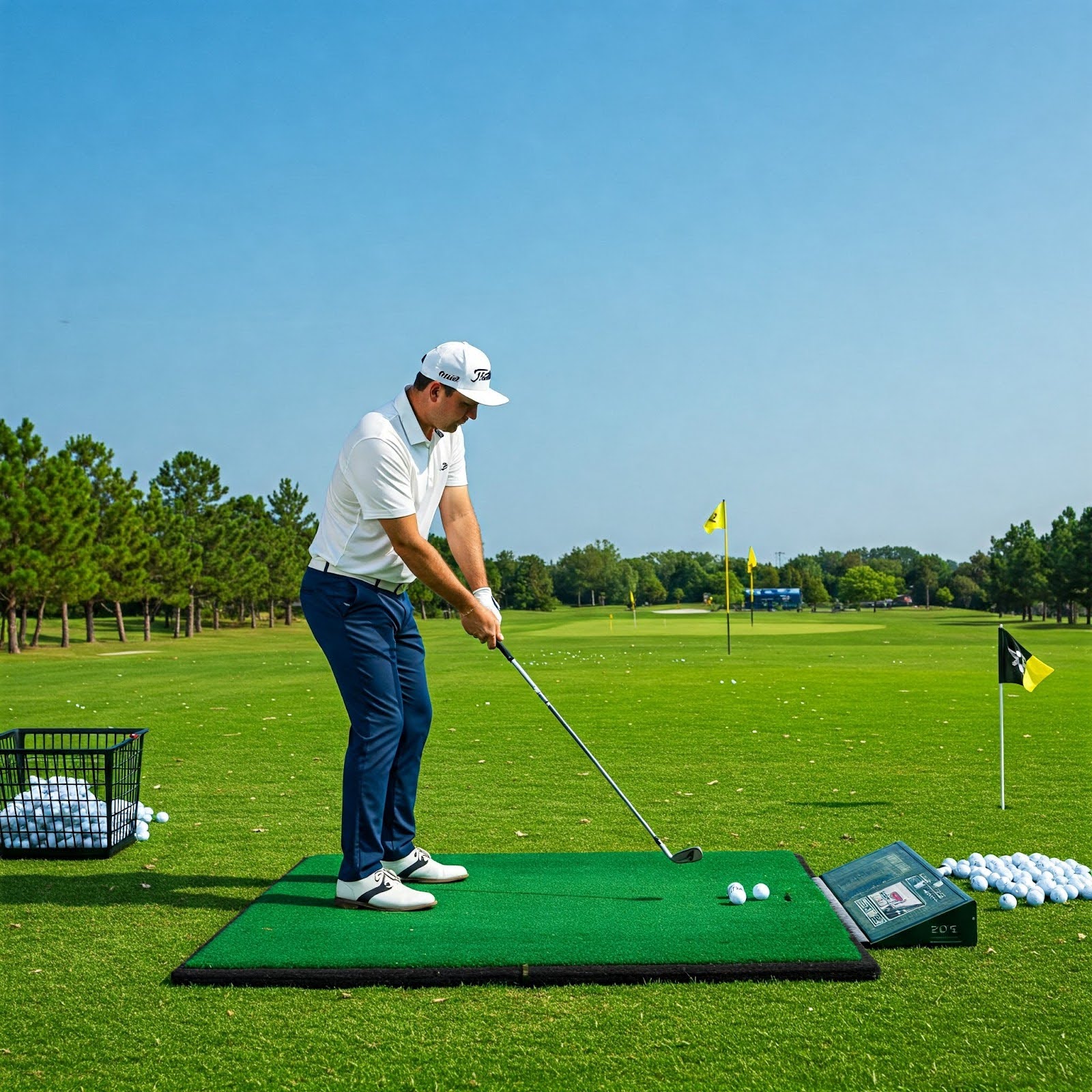Elevate Your Practice: Transform Mindless Repetition into Meaningful Improvement

Many golfers fall into a routine of mindlessly hitting balls at the range. They grab a bucket, set up, and swing away, hoping that repetition alone will lead to improvement. However, this "drop and scrape" approach can be inefficient and even counterproductive. To truly elevate your practice and achieve meaningful results, it's essential to adopt a more strategic and deliberate approach.
Simulate the Course: Practice Like You Play
To maximize your practice time, it's crucial to simulate real-world conditions as closely as possible. Instead of mindlessly swinging, set up targets, consider wind conditions, and visualize the course layout. Imagine hazards like bunkers or water, and strategize your shots accordingly. Whether you're aiming for a draw, fade, or straight shot, practice with purpose and intention.
Embrace the Feedback Loop: Analyze and Adjust
After each shot, take a moment to analyze your swing and ball flight. What did you do well? Where did you miss the mark? Identify areas for improvement and make adjustments accordingly. This continuous feedback loop will help you refine your technique and build muscle memory for consistent performance on the course.
Approaches to Practice:
- The "Play a Hole" Approach: Select a club and imagine a specific hole on your course. Consider the distance, hazards, and the desired shot shape. Play the shot as if you were on the course, making adjustments as needed.
- The "Shot Shape" Approach: Focus on mastering specific shot shapes, such as draws, fades, and high/low shots. Practice hitting these shots consistently to expand your repertoire and improve course management.
- The "Problem-Solving" Approach: Identify a specific weakness in your game (e.g., inconsistent contact, topping the ball). Design drills and practice routines to address this weakness and develop a solution.
- The "Tempo and Rhythm" Approach: Use a metronome or count out your swing to develop a consistent tempo and rhythm. This will help you improve timing and swing smoothness.
- The "Short Game Focus" Approach: Dedicate a significant portion of your practice to the short game, including chipping, pitching, and putting. These skills are crucial for scoring well.
- The "Full Swing Sequencing" Approach: Break down your swing into individual components (e.g., backswing, downswing, impact) and practice each component smoothly and sequentially.
- The "Course Simulation" Approach: Use practice greens and driving ranges that replicate challenging course conditions, such as slopes and uneven lies.
- The "Video Analysis" Approach: Record your swings and analyze them to identify technical flaws and areas for improvement.
- The "Mental Rehearsal" Approach: Visualize successful shots and positive outcomes before you even step on the course. This can help build confidence and improve focus.
- The "Fun and Games" Approach: Incorporate games and challenges into your practice to make it more enjoyable and engaging. This can help maintain motivation and make practice more effective.
Conclusion: A Roadmap to Improvement
Effective practice isn't about the number of balls you hit; it's about the quality of your swings and the insights you gain. By implementing these strategies, you can transform your practice sessions into meaningful learning experiences:
- Set Clear Goals: Define specific, measurable, achievable, relevant, and time-bound (SMART) goals for each practice session.
- Simulate Real-World Conditions: Practice with a purpose, considering course conditions and shot strategies.
- Embrace the Feedback Loop: Analyze each shot and make adjustments accordingly.
- Incorporate Variety: Keep your practice sessions engaging by switching clubs, working on different shot shapes, and practicing from various lies.
- Be Patient and Persistent: Consistent effort and a positive mindset are key to long-term improvement.
By practicing smarter, not harder, you'll be well on your way to achieving your golfing goals and enjoying a more rewarding and enjoyable game.
